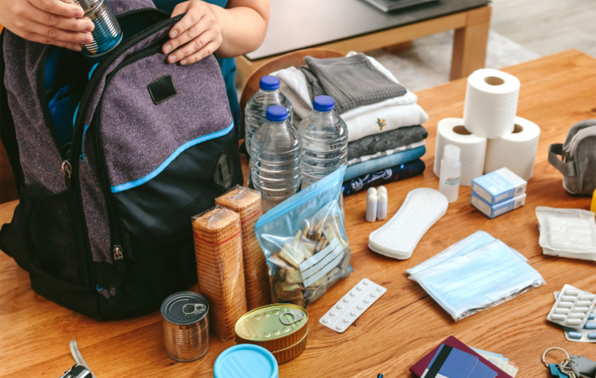How to make a home emergency plan
Make a home emergency plan so you and your whānau know what to do if disaster strikes.

New Zealand is vulnerable to earthquakes, tsunami, volcanic eruptions, fires, and severe storms with flooding and landslides. Such an event could happen when you’re sleeping, or when some family members are at work and school or elsewhere. You need a plan so your whole family knows what to do, wherever they are.
Making a plan so you’re prepared for emergencies is easy and it’ll give you a sense of confidence.
You can get information (in various languages) about making a plan and download a template at getready.govt.nz. If you’ll find it easier to type your plan, click ‘get started’ on that web page, or create your own document in whatever format you’ll find easiest.
Here you can see you can see two different households making their home emergency kits and emergency plans.
What to include in your emergency plan
- A list of all members of your household, including pets and other animals. Include names and dates of birth, and descriptions or photos of your animals in case you get separated.
- Phone numbers for emergency services, your local council’s emergency hotline, your doctor, landlord, insurance company, power company, children’s daycare or school, work, family members, and any friends who are emergency contacts.
- Radio stations and frequencies, websites and social media channels where you’ll get news alerts and updates. See stay informed.
- How to turn off water, power and gas. Include the location of any tools required and how to use them. Note: Don’t turn off utilities unless you suspect a gas or water leak or damaged power lines, or you’re instructed to by authorities.
- Where you’ll meet if you can’t get home and can’t contact each other. If you have young children, their school might be the best place. Write down the address and walking directions for each person from home, work and any other regular location.
- Where you’ll go if you need to evacuate. Make sure the location is outside tsunami evacuation zones. Check where the community emergency hubs are in your area – see find your civil defence group. Write down the address and walking directions for each person from home, work, school and any other regular location.
- Who will help anybody in your household who might need assistance to evacuate. Consider neighbours who might need help too. Write down their names and who you’ve assigned to assist.
- Who’ll pick up the kids if you can’t collect them from school, daycare or other regular location. Tell the school or daycare centre that this person has your permission.
- Who’ll look after your animals if you can’t get home. Make sure that person can get access and knows what to do and where to find supplies. Keep cages and leads handy for transport.
- The location of your emergency kit and supplies stored in other parts of your home. Make a note of where everyone’s emergency grab bags are kept too, in case you need to evacuate. They must be stored where they’re quick and easy to grab.
- Alternative sources of clean drinking water at home. In addition to the water you’ve stored for emergencies, make a note of other sources, such as your toilet cistern and hot water cylinder.
- Alternative sources of drinking water in your community. Some regions have water collection points that will provide water to people after day seven of an emergency if it has cut off residential water supply. Check with your local council. Write down the address of any water collection points close by and how to get there.
- How you’ll ration your emergency supplies. Make a clear note of how much water and food that’s in your home emergency kit is allocated for each person and animal each day, so you don’t run out.
Don’t forget these essential steps
- Print hard copies of your emergency plan to keep with your emergency kits. If you haven’t yet made a home emergency kit, doing so will make it easier to complete some parts of your plan. You can check out our guide here.
- Email a copy to everyone in your household and anyone else who has a responsibility in your plan, plus close family who don’t live at home.
- Set a diary reminder for one year from the date you wrote or last updated your plan. Situations often change. You’ll need to update your emergency plan if extra people join your household, if you move house, or if anyone at home changes workplace, school or other regular location.

How to make your own emergency grab bag
You can create your own kit for a lot less money than some premade ones, and it’ll be customised to you.
Member comments
Get access to comment